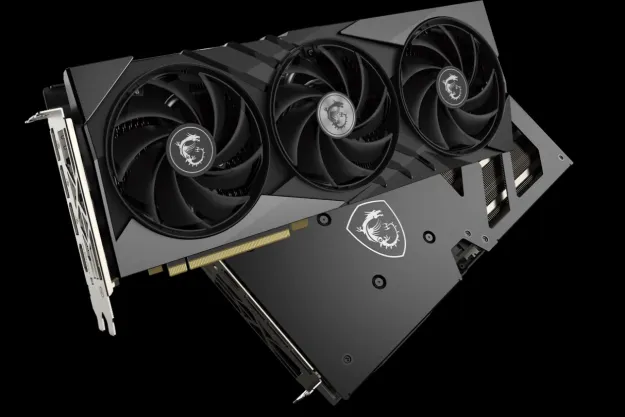After a botched effort to limit the appeal of its GeForce RTX 3060 graphics cards with cryptocurrency miners, Nvidia may be back with a new strategy designed to keep its GPUs in the hands of gamers. The company is rumored to be working on a refresh of its existing lineup of GeForce RTX 3000 series GPUs, which are based on the Ampere architecture.
The new solution? A feature known as Lite Hash Rate (LHR), which will limit the hash rate capabilities of the card and make it unattractive for mining currencies like Ethereum. Unlike past efforts, LHR is said to be nearly impossible to bypass. In essence, Nvidia’s second software-based stab at limiting the crypto mining appeal of its GPUs is designed to keep more of its graphics cards on the market for gamers, but such a strategy may not result in a more meaningful supply of GPUs for purchase.
Allegedly, the new GeForce GPUs with the new GA**2 branding will come with resizable BAR support when they ship in mid-May, according to a report on Videocardz. These new cards are just updates of existing cards, like the RTX 3080, so they won’t come with any additional power for gaming. The main differences are that gamers won’t need to perform a vBIOS upgrade to get resizable BAR support and the addition of the new LHR feature to limit the appeal of the cards to miners. As there aren’t any notable hardware improvements, it seems that these features are software defined, with Nvidia quietly rolling out the refreshed cards to partners and retailers. The cards are expected to go on sale in June.
It’s unclear if Nvidia has software-defined keys to reverse the LHR limitation on these new cards. It’s been reported that flashing an old BIOS version on the LHR cards won’t work, as there are some mechanisms in place to prevent the firmware “downgrade” from installing on the newer cards. In the past, though the RTX 3060 shipped with similar software limitations designed to make the cards less attractive to miners, the company had accidentally released a driver update that did away with the limits on cryptocurrency mining.

But will it really fix the problem? It’s nearly impossible to buy an RTX 3000 GPU anywhere near retail pricing, even many, many months after the initial launch. While cryptocurrency miners are a big cause of the great global GPU shortage of 2020 and 2021, they aren’t the only culprits. Nvidia, like other semiconductor players such as rival AMD, have been hampered with supply-side constraints, meaning there are shortages of components used in making the graphics cards.
Without addressing this root issue, Nvidia wouldn’t be able to increase supply in any significant manner to address the overwhelming demand for more powerful PCs, particularly ones that can play games, during the pandemic.
The second issue is that scalpers are hoarding the rare supplies of GPUs, and the rising prices of graphics cards on secondary markets like eBay further constrains supplies while fueling the increase in demand. Observers have noticed that some of Nvidia GPUs are fetching twice or triple their suggested retail price on the secondary market, making it lucrative for scalpers to snap up the GPUs as soon as inventory is replenished by authorized retailers. Furthermore, as retailers are realizing the scheme, they are also pushing prices upward through tactics such as bundling. The company had previously cautioned that GPU shortages could last until July.
Don’t get me wrong. Nvidia’s strategy is commendable, and it may help take care of part of the problem. But will it fix the supply issue at large? Not likely. It doesn’t appear to go far enough to produce meaningful results, and gamers may still be left disappointed. However, if you are able to pick up one of the rumored new GPUs, it will come installed with some fresh features out of the box, so you won’t need to do any BIOS upgrades.
Editors' Recommendations
- Nvidia RTX 50-series graphics cards: news, release date, price, and more
- Nvidia just made GeForce Now so much better
- Nvidia’s new GPUs could be right around the corner
- I tested AMD’s RX 7800 XT against Nvidia’s RTX 4070, and there’s a clear winner
- Here’s why I’m glad Nvidia might kill its most powerful GPU


